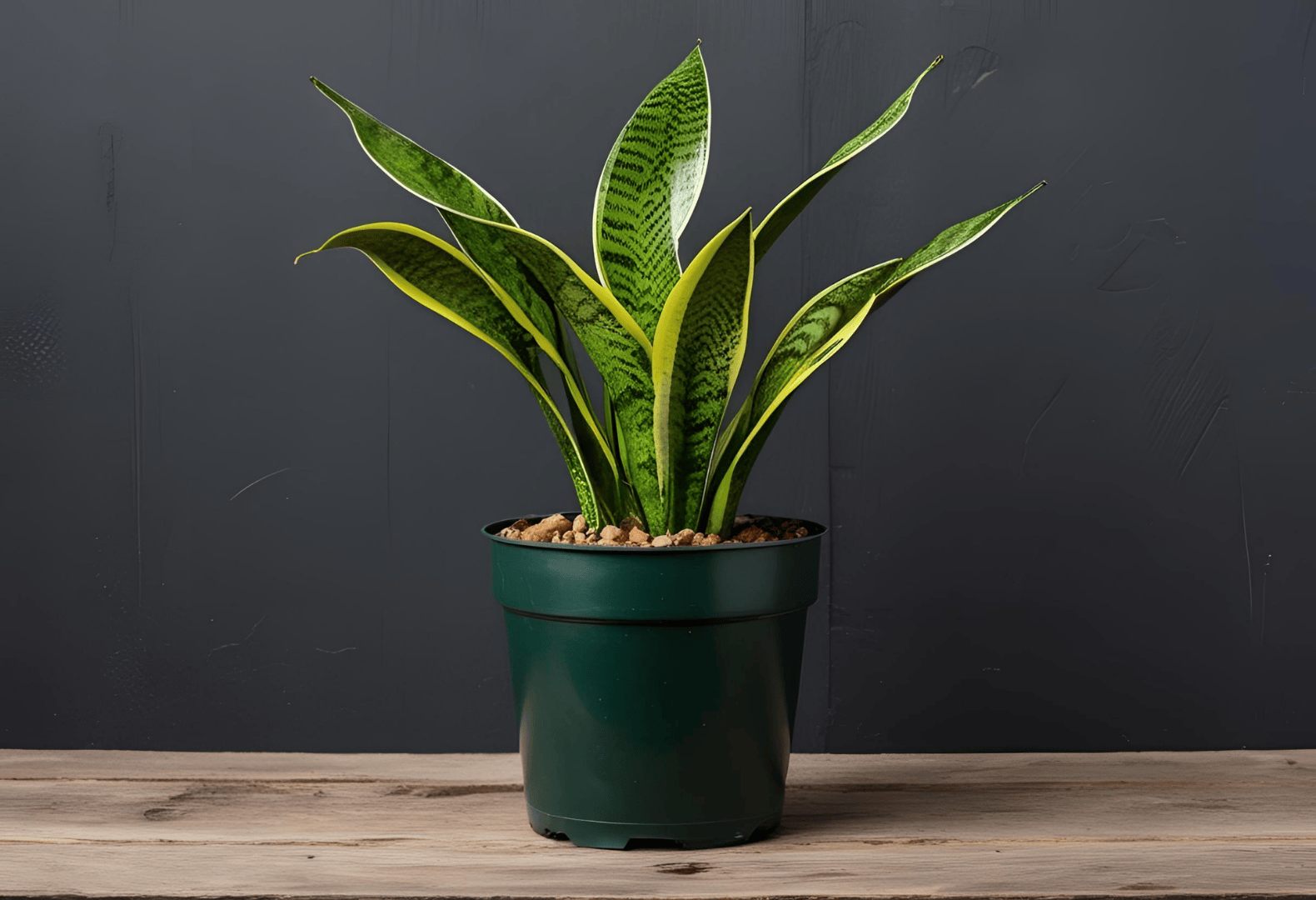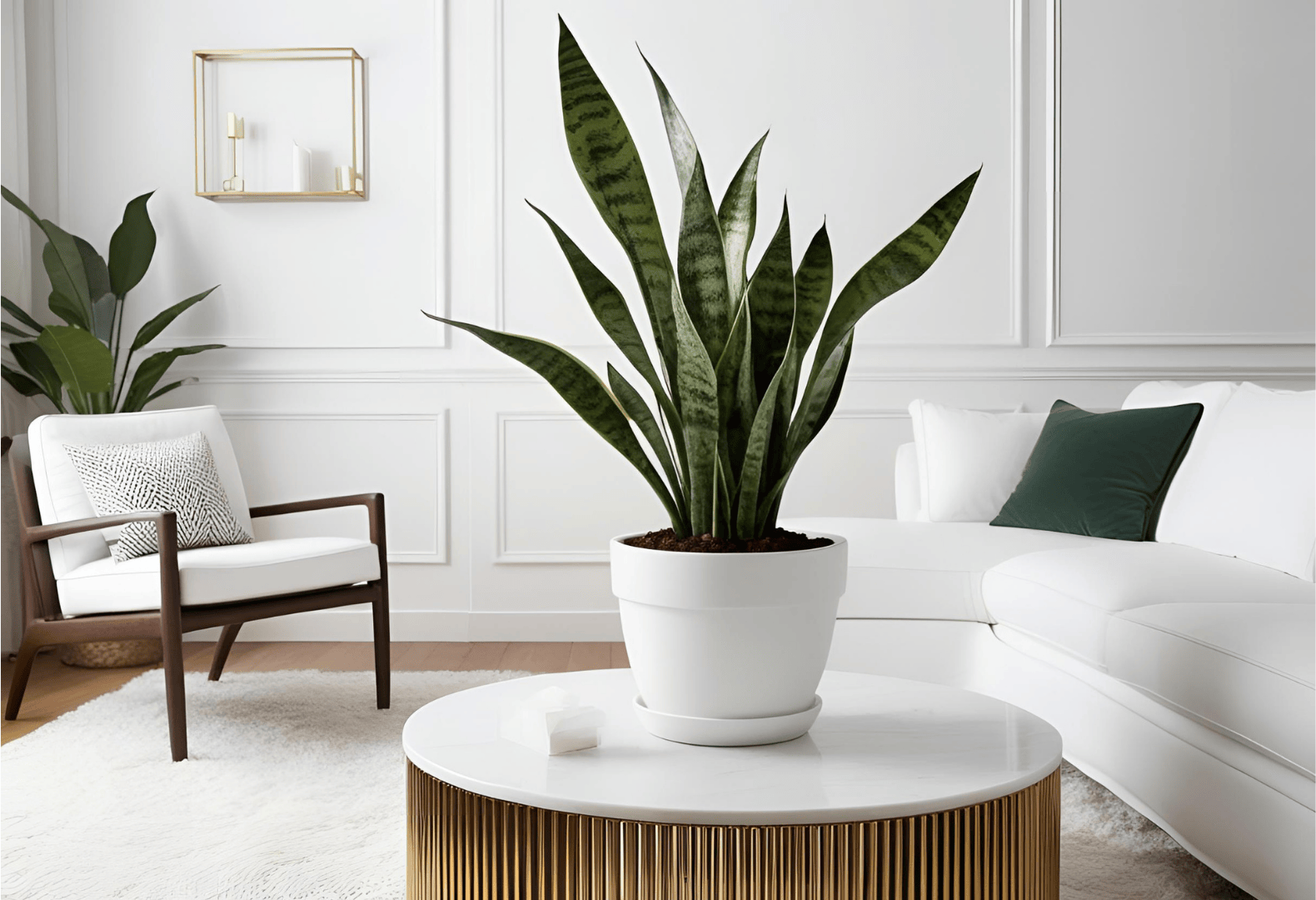Spider plants (Chlorophytum comosum) are an excellent choice for indoor gardening. Not only are they aesthetically pleasing with their long, arching leaves, but they’re also incredibly easy to care for, making them perfect for both beginners and experienced plant lovers alike. If you’re looking to bring a little greenery into your home, this Spider Plant Care Guide will provide all the information you need to keep your plant healthy and vibrant.

Watering Your Spider Plant
Watering is one of the most important aspects of Spider Plant care. These plants prefer to dry out a little between waterings, so it’s essential to avoid overwatering, which can lead to root rot.
To determine when it’s time to water your Spider Plant, touch the top of the soil with your finger. If it feels dry, it’s time to give your plant a drink. However, if the soil feels moist, hold off on watering for a few more days. During the growing season (spring and summer), water more frequently, but reduce watering in the fall and winter when the plant’s growth slows down.
Tip: Spider plants are relatively low-maintenance when it comes to watering. Just be sure to water thoroughly, but don’t let your plant sit in water. Drainage is key to healthy roots.

Sunlight Needs for Your Spider Plant
Spider plants are adaptable when it comes to light conditions. However, to keep them at their best, place your plant in bright, indirect sunlight. Direct sunlight can scorch the leaves, causing brown tips, so avoid placing your plant in a spot where it will receive harsh, direct sun for long periods of time.
If you’re growing your Spider Plant indoors, placing it near a window with sheer curtains is a great idea. If you don’t have access to bright light, don’t worry! Spider plants can also tolerate low light, though they will grow more slowly in such conditions.
Tip: Spider Plants thrive in light that’s around 1000–2000 lux. If you’re unsure about the light level in your home, consider using a light meter to help you find the best spot for your plant.
Fertilizing Your Spider Plant
Fertilization helps your Spider Plant grow strong and healthy. However, it’s important not to overdo it. A balanced liquid fertilizer with an NPK ratio of 20-20-20 is ideal for Spider Plants. Fertilize your plant every 4–6 weeks during the spring and summer growing season, and reduce fertilization during the colder months.
Tip: Always dilute your fertilizer to half the recommended strength to avoid over-fertilizing. Too much fertilizer can lead to yellowing or burnt tips on the leaves, which is a sign of nutrient overload.
Recommended Fertilizer:
- Balanced Liquid Fertilizer (NPK 20-20-20 or 10-10-10) – Promotes healthy growth.
- Organic Fertilizers: Fish Emulsion, Compost Tea.
Tip: If you often forget to fertilize, consider using slow-release granular fertilizers. These fertilizers dissolve over time, providing continuous feeding to your Spider Plant.
Temperature & Humidity Requirements
Spider plants are native to tropical and subtropical regions, so they thrive in warm environments. The ideal temperature range for Spider Plants is 60–75°F (16–24°C). They do best in a consistently warm environment, so avoid placing them in areas where the temperature fluctuates dramatically, such as near heating vents, air conditioners, or drafty windows.
Humidity isn’t a big concern for Spider Plants. They can adapt to most indoor humidity levels, but they will grow best in slightly humid conditions.
Tip: If your home is very dry, especially during winter, consider placing your Spider Plant on a humidity tray or misting it occasionally to increase moisture in the air.
-
All Products
Plant Care Humidifier – Ultrasonic, Mute, Intelligent with Remote Control and Aromatherapy
£138.40 Select options This product has multiple variants. The options may be chosen on the product page -
All Products
Flame Effect Aromatherapy Humidifier – Ultrasonic Plant Care Device (250 ml)
£29.99 Select options This product has multiple variants. The options may be chosen on the product page -
All Products
Ultrasonic Aroma Diffuser with Colorful Night Light – Silent Essential Oil Diffuser with Remote Control
£76.50 – £83.61 Select options This product has multiple variants. The options may be chosen on the product page -
All Products
Portable Humidifier for Plants – Keep Your Greenery Healthy Anywhere
£28.87 Select options This product has multiple variants. The options may be chosen on the product page
Soil Requirements for Your Spider Plant
Well-draining, lightweight soil is essential for a healthy Spider Plant. A mix designed for houseplants with added perlite or sand works best, as it provides good drainage and aeration for the roots.
Tip: You can create your own soil mix by combining standard potting soil with perlite and orchid bark. This will help ensure that your Spider Plant’s roots don’t sit in water, which can lead to root rot.
Pruning and Maintenance
While Spider Plants don’t require much pruning, occasional trimming can help maintain their shape and health. If the leaves become long or leggy, cut them back to encourage new growth. You can also trim any dead or brown leaves to keep your plant looking fresh.
Another benefit of pruning is controlling the plant’s size. If your Spider Plant has outgrown its pot or you’d like to keep it from spreading too much, you can trim the long stems to redirect energy to other parts of the plant.
Tip: Regularly check for dead or yellowing leaves. These leaves are a sign that your plant needs a little extra care, and removing them will allow the healthier parts of your plant to thrive.
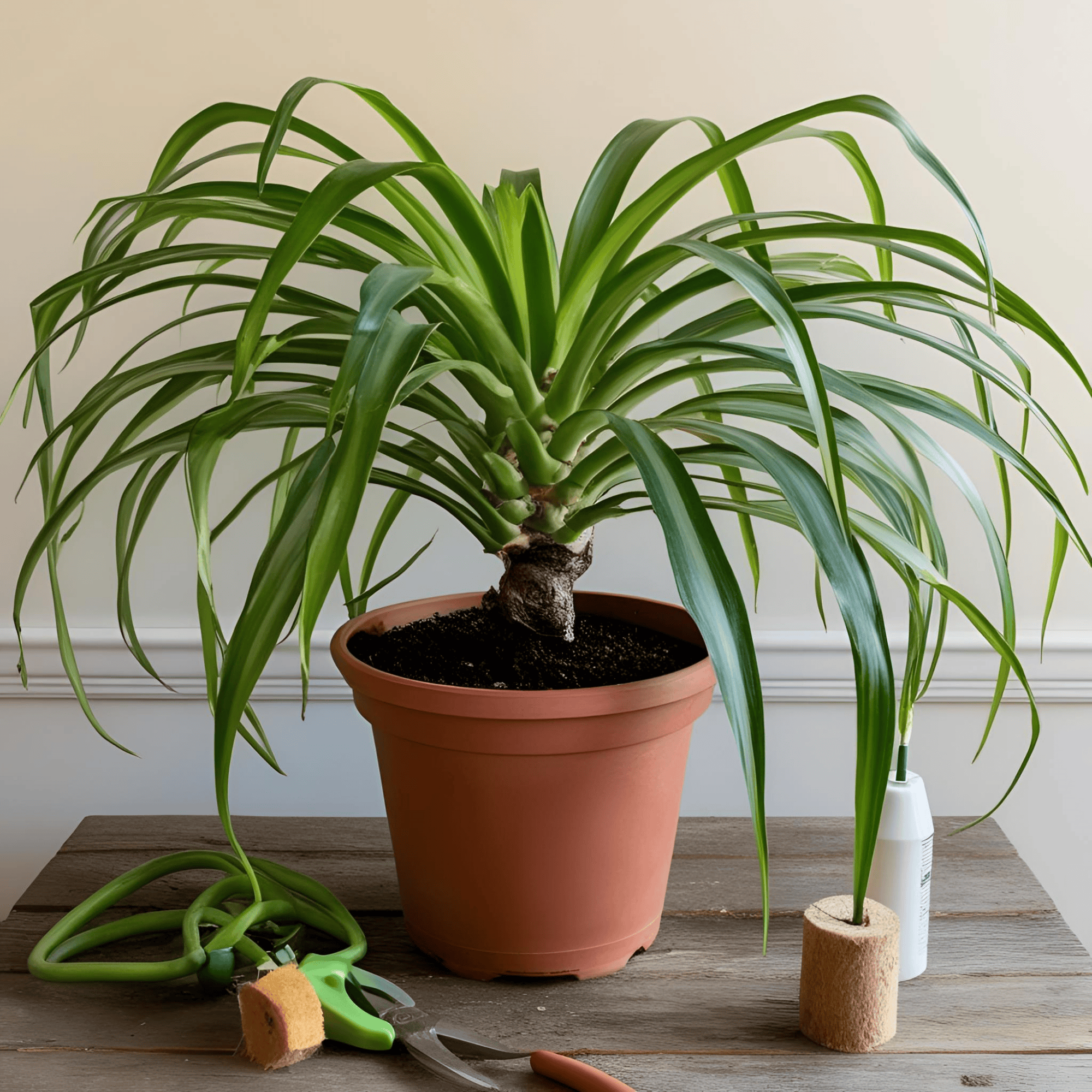
-
All Products
Pruning Shears for Gardening – Heavy-Duty Manganese Steel Branch Cutter with Safety Lock
£22.99 Select options This product has multiple variants. The options may be chosen on the product page -
All Products
Pruning Shears – Branch Cutting Tools for Gardening, Household & Fruit Tree Maintenance
£31.99 – £35.99 Select options This product has multiple variants. The options may be chosen on the product page -
All Products
Stainless Steel Pruning Shears – Multifunctional Elbow Design for Efficient Branch Cutting
£19.99 – £29.99 Select options This product has multiple variants. The options may be chosen on the product page
Pests and Diseases
Although Spider Plants are generally hardy and resistant to most pests and diseases, they can occasionally fall prey to some common houseplant pests like spider mites, aphids, or mealybugs.
To combat pests, wipe the leaves with a damp cloth or spray the plant with a mixture of water and mild dish soap. Neem oil is also an effective and natural pesticide. If you notice any signs of fungal or bacterial diseases (such as dark spots or mold), remove the affected leaves and treat the plant with a suitable fungicide.
Tip: Regularly check the undersides of the leaves, as pests often hide in this area.
Is the Spider Plant Toxic?
Good news! Spider Plants are non-toxic to both humans and pets, making them a great choice for families with children or animals. So, if your curious pet decides to take a nibble, there’s no need to worry. However, while non-toxic, eating large amounts may cause mild digestive discomfort, so it’s best to keep an eye on your plant around pets.
Propagating Your Spider Plant
Spider Plants are incredibly easy to propagate. In fact, they produce small “pups” or plantlets on long stems, which you can cut off and root in water or soil. To propagate your Spider Plant, simply cut one of these pups that has a well-developed root system and place it in a container of water or soil.
Within a few weeks, the pup will develop its own roots, and you can transplant it into its own pot to start growing. It’s an easy and cost-effective way to expand your plant collection!
Tip: You can also let the pups grow in the parent plant’s pot and enjoy a fuller, bushier Spider Plant.
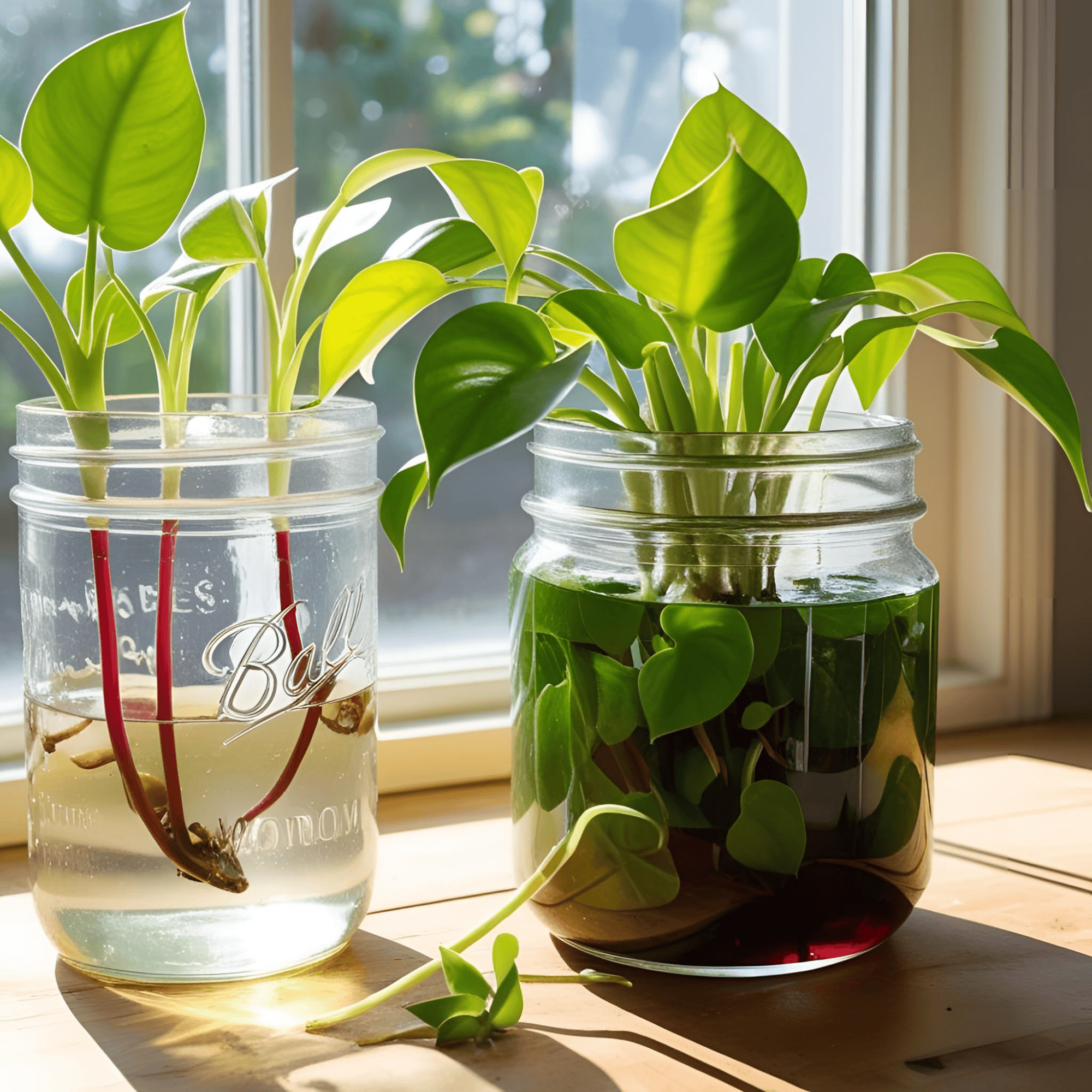
General Spider Plant Care Tips
- Repotting: Repot your Spider Plant every 1–2 years to refresh the soil and give the roots more space to grow.
- Air Purification: Spider Plants are excellent air purifiers. They help remove toxins like formaldehyde from the air, improving the overall air quality in your home.
- Cleaning: Occasionally, wipe the leaves with a damp cloth to remove dust and keep them looking shiny and fresh.
FAQ
Q: Why are the tips of my Spider Plant leaves turning brown?
A: Brown tips are usually a sign of overwatering, underwatering, or exposure to direct sunlight. Ensure you’re watering your plant correctly and avoiding harsh sunlight.
Q: How often should I repot my Spider Plant?
A: Repot your Spider Plant every 1–2 years or when the roots have outgrown their current pot. This helps the plant thrive and grow more vigorously.
Q: Can I grow a Spider Plant in low light?
A: Yes! Spider Plants can tolerate low light, but they grow best in bright, indirect sunlight. If light levels are too low, growth will slow down.
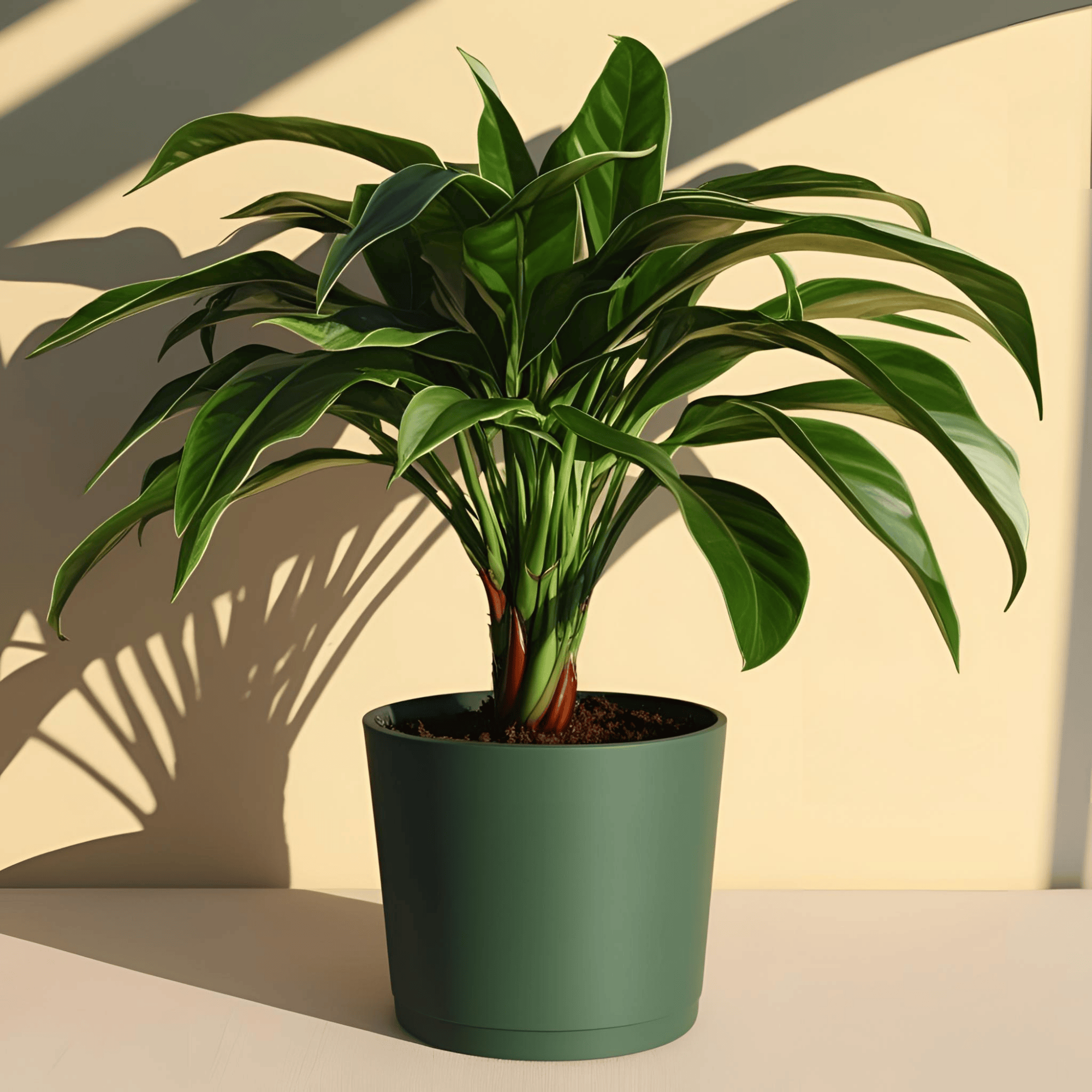
Read More:
- What Is Spider Plant? A Comprehensive Guide – Discover the unique features of this air-purifying indoor plant.
- How to Grow Spider Plant at Home: A Cozy Guide for Your Living Space – Simple steps to grow and propagate Spider Plants.
Plant Profile

Common Name

Plant Type

Mature Size

Sun Exposure

Soil Type

Soil pH

Bloom Time

Color

Hardiness Zones

Native Area

Humidity

Lighting

Temperature

Difficulty

Hibernation

Toxicity













